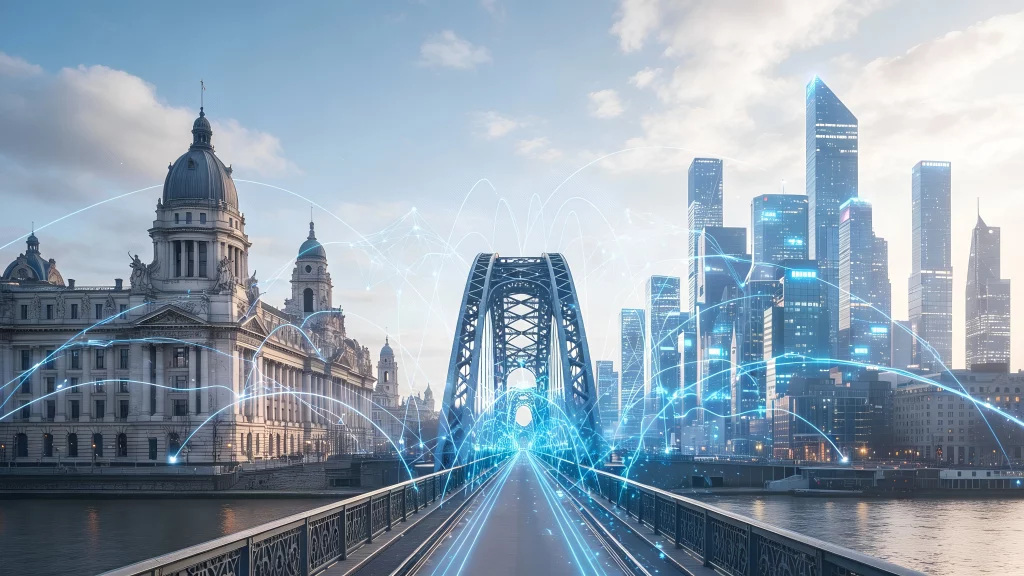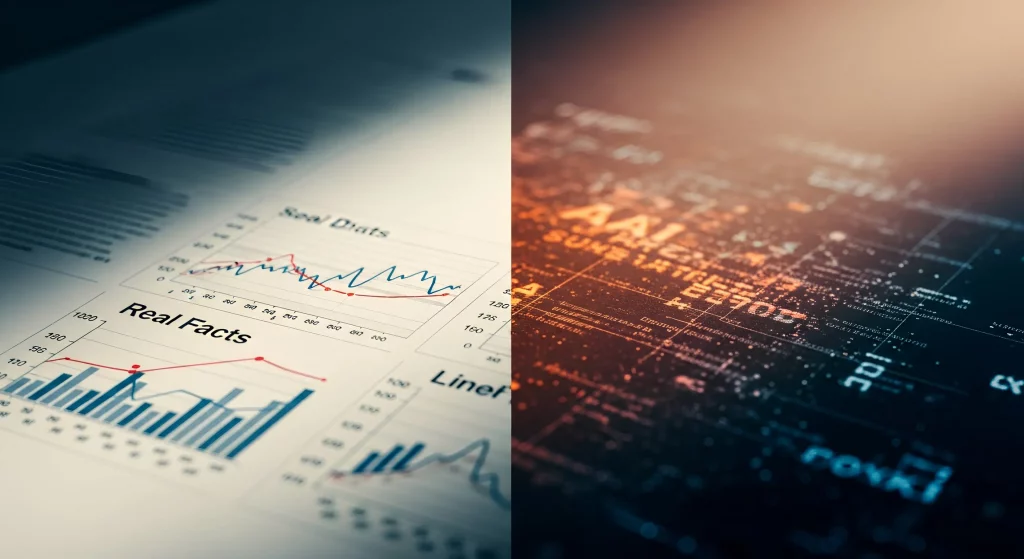New Challenges Demand New Solutions: Artificial Intelligence Identifies Risks in Big Data
Tornadoes and floods such as those currently occurring in the USA, the COVID-19 pandemic and the war in Ukraine have shown how diverse environmental factors not only threaten people in the respective regions, but also have a direct impact on globally active companies. In the age of “just-in-time production”, this quickly leads to interrupted supply chains and a lack of resources. Unstable societies in a globalized world pose further dangers. In short, the diverse risks for globally active organizations continue to increase.
Monitoring and early detection of these risks is becoming an ever greater challenge for companies. Added to this are stricter laws such as the new supply chain laws or internal company sustainability requirements. Global and company-wide risk monitoring is increasingly becoming a central task in compliance departments. However, without technical support, not all internal company documents and all relevant external websites worldwide can be monitored for potential risks. Artificial intelligence is needed to take over these tasks automatically and issue warnings if a potential risk arises for the respective company or society.
MORESOPHY’s new AI models do exactly that: With over 18 risk categories, including sustainability, diversity, pandemic, illiquidity, hate speech, catastrophic events, crime, illegal drugs, military conflicts and many more, MORESOPHY automatically recognizes differentiated risks in huge volumes of text. By semantically understanding texts with the help of AI, potential risks can now be identified even faster and more precisely. This enables companies and organizations to protect themselves more effectively against potential risks.

How do AI Models Actually Work?
The AI models for classifying texts are based on machine learning. In particular, they use natural language processing (NLP) methods.
An important part of these AI models for recognizing risks is the so-called “semantic understanding”.(Read here how a computer can learn to understand natural language use) This involves the use of methods such as word vectors (how computers recognize language without a dictionary is explained here using the N-gram method) and neural networks to capture the meaning of the words and phrases in a text. This enables AI to understand and interpret textual content accurately.
The AI models are “trained” using large volumes of pre-classified, i.e. evaluated texts (so-called training data), such as news articles or company reports, which are divided into the various risk categories. The models then learn which word and phrase patterns in the texts are typical for certain risk categories. However, obtaining this data poses major challenges for many AI companies. MORESOPHY has developed its own innovative processes to obtain large volumes of reliable training data. This not only includes a corresponding infrastructure for web crawling. There is another point that is much more crucial, and which is particularly critical of the large AI models developed by US technology companies. Since a model learns everything it is given to read, it is crucial to take appropriate care when selecting and evaluating content. MORESOPHY therefore develops its AI not only with large amounts of data, but on the basis of an end-to-end process that offers maximum transparency across the database. This transparency is critical to success, especially in a topic as sensitive as risk management.
Possible Applications for AI Models to Identify Risks
There are many fields of application for artificial intelligence models for the detection of risks, as they are able to classify large amounts of data in a very short time. Some examples of the use of these artificial intelligence models could be:
- Sustainability and ESG: Analysis of documents and websites to identify ESG risks and sustainability aspects in companies and industries.
- Media industry: Identification and removal of unwanted content on social media to prevent the spread of hate speech, terrorist content and other harmful material (see CONTEXTCLOUD)
- Cyber security: Classification of company-wide content in order to have an overview of all stolen data in the event of data theft and to encrypt confidential and high-risk data so that the potentially dangerous data cannot be read by attackers in the event of a data leak. Read an article on this use case.
- Supply Chain Act: Identification of violations of the Supply Chain Duty of Care Act on the WWW through continuous monitoring of all media and websites of NGOs. MORESOPHY is currently implementing a corresponding solution for companies with its partner Clarius.Legal.
- Human resources: Automate the detection of discrimination, sexual harassment and other inappropriate behavior within corporate communications and other HR-related texts.
There are many other ways in which AI models, such as the new AI models from MORESOPHY, can be used. However, every industry and every company has its own specific requirements and challenges that need to be mastered for each new use case.
Sustainability and ESG issues in the corporate context play a key role in corporate governance.
Automatic Detection of Sustainability and ESG using AI Models
Sustainability and compliance with ESG standards (environment, social and governance) are of key importance for many companies and industries. A major challenge lies in the reliable identification of risks and sustainability aspects themselves. This is because the amount of data to be monitored is immense. Be it internal data such as emails and documents or external sources such as news sites, blogs or other websites.
Only with the help of artificial intelligence, such as the new risk AI models from MORESOPHY, can such mammoth tasks be accomplished. For example, they automatically analyze texts and identify risks and sustainability aspects in relation to ESG. This can be done, for example, by continuously analyzing internal data, company reports, news articles, social media posts, etc.
Identifying ESG risks and sustainability aspects in texts can help companies and industries to better understand and manage their risks and improve their sustainability performance. It also helps investors and other stakeholders to better understand the ESG ratings of companies.
A spontaneous analysis with CONTEXTCLOUD shows various facets and developments on the topic of sustainability based on a good 3 million websites. For example, it is possible to identify which topics were influential in connection with sustainability in 2022:

Advantages of the New AI Models for Identifying Risks for Companies and Organizations
The new risk models offer a number of advantages by helping to automatically recognize risks in texts and react to them quickly. Some of these advantages can be
- Time and cost savings: By automatically detecting risks in texts, companies and organizations can save time and costs that they would otherwise have to spend on manually checking texts.
- Increase security and compliance: Companies can significantly improve their data security and increase compliance – ensuring they meet legal requirements and industry standards.
- Increasing sustainability and ESG performance: Particularly in the area of sustainability and ESG, companies and organizations can better understand and improve their performance in these areas and thus proactively respond to increasing demand from investors and customers.
- Improved decision-making: AI-based text analytics enables the automatic extraction of relevant information and insights from large volumes of unstructured data. This significantly improves the ability to make more informed decisions by giving them a more complete and accurate understanding of the risks and opportunities they face.
Outlook
Some of the possible applications mentioned here are already being implemented with customers and partners of MORESOPHY. If you are interested in an exchange, please contact us at: info@moresophy.com.
The research and development of innovative processes, models and applications has always been very important to MORESOPHY. With a very high R&D rate of over 20%, MORESOPHY has always been able to offer its customers the best solutions on the market. This will continue to be the case in the future. The quality of MORESOPHY’s pre-trained models will continue to improve in the future in order to be able to implement application-specific solutions quickly and cost-effectively.
In a nutshell
In short, new solutions with artificial intelligence are needed to respond to the new challenges. The new risk categories of MORESOPHY significantly improve the automatic detection of risks in unstructured texts and open up many new application possibilities. The application of such AI-based risk detection is becoming increasingly indispensable for companies. Many of these possibilities are already being implemented. They will also be implemented in the applications of MORESOPHY’s partners and customers in the coming weeks.
MORESOPHY is also ready to implement your specific use case. Contact us to discuss your requirements.
Project manager
Andreas studied Technology & Media Communication and is primarily responsible for internal and external communication and documentation within the company. This gives him an optimal overview of the various technologies, applications and customers of MORESOPHY.
More articles from Data-Driven Business

|
|

|
|

|
|
